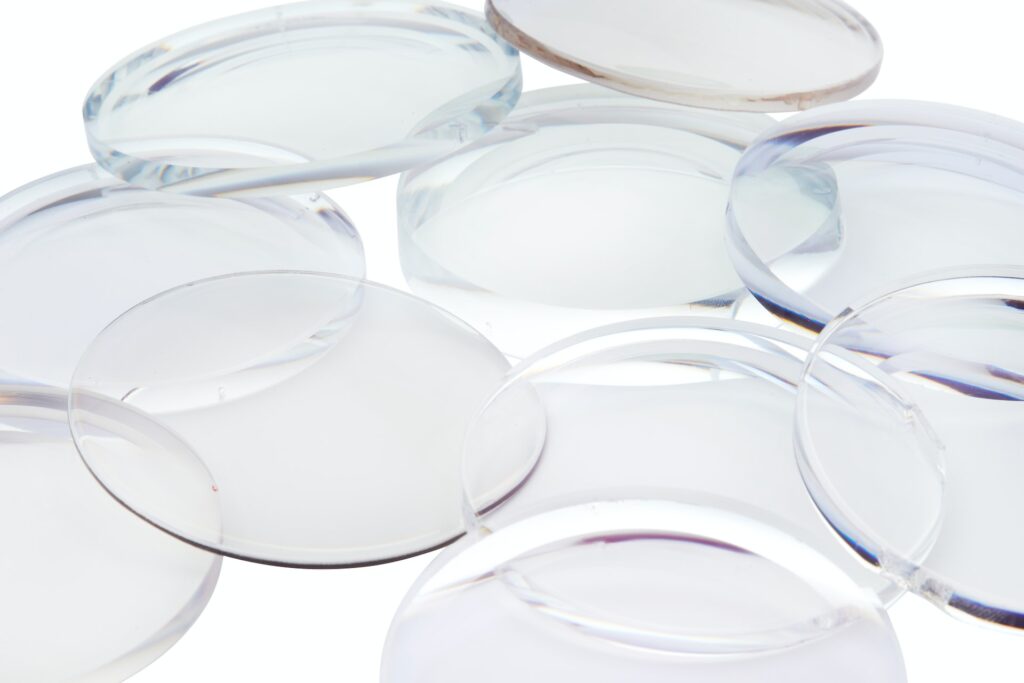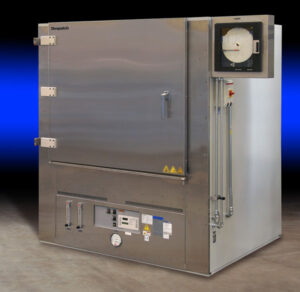More than 125 million people wear contact lenses globally. Manufacturing high-quality contact lenses, however, is a challenge. They’re delicate products that must feature specific physical properties and optical characteristics. There’s also an extensive list of special characteristics manufacturers need to meet. They meet these requirements for contact lens production with help from industrial ovens. They help these companies optimize their manufacturing processes to achieve the highest levels of precision, accuracy, and efficiency.
Manufacturers engineer contact lenses from glass (hard lenses) or silicone hydrogel (soft lenses). Both types feature oxygen permeability, an indispensable element for the wearer’s comfort. Hybrid contact lenses made from gas-permeable plastic are also available. They feature a peripheral fitting zone softer than the optical part. Soft contact lenses are the most popular choice of all contact lens types. Their market share is expected to increase by USD 1.74 billion from 2021 to 2026.
Critical Benefits of Industrial Ovens
Industrial and laboratory ovens are crucial in optimizing contact lens manufacturing. Below are the most significant benefits of using industrial ovens in contact lens manufacturing:
- Improved Efficiency: Designed to be highly efficient, industrial ovens can precisely control each process’s temperature and timing. Precise temperature control ensures the lens material is formed and dried to the correct specifications. Precise control also reduces the risk of defects and waste and helps cut the time required for each process, increasing overall productivity and reducing costs.
- Consistent Results: Industrial ovens provide contact lense manufacturers with consistent results. By controlling the temperature and timing of each process precisely, these ovens help to ensure that each batch of lenses is manufactured to the same exacting standards, reducing the risk of defects and improving the quality of the final product.
- Quality Control: Industrial ovens must meet strict quality control requirements, making them ideal for use in a clean room environment. They can be configured to precisely control the airflow and humidity in the oven, reducing the risk of contamination and helping maintain a clean, sterile production environment.
- Improved Durability: Contact lenses may be aged to test their durability and reliability over time. Industrial ovens can control the temperature and timing of the aging process, ensuring that the lenses are exposed to the right conditions for the correct amount of time. This process helps improve the durability and reliability of the final product.
Common Uses of Industrial Ovens
The manufacturing process for producing contact lenses includes raw material selection, monomer mixture, polymerization, lathe cutting, surface finishing, quality control,
sterilization, and packaging. Depending on the specific requirements of the lenses, some additional steps may be required, such as coloring, patterning, or the addition of more features. Industrial ovens are integral to this effort.
Some common uses of industrial ovens in manufacturing contact lenses include:
- Producing soft contact lenses involves using a polymerization process to form the lens material. Industrial ovens help control the temperature and timing of the polymerization process to ensure consistent results.
- Contact lenses must be thoroughly cleaned in multiple washing baths before applying an AR coating. A drying and degassing process follows this step. Manufacturers nee industrial ovens that control the temperature and timing of the drying process precisely to ensure consistent results.
- Manufacturers must sterilize contact lenses to ensure their safety. Industrial ovens sterilize contact lenses by exposing them to high temperatures for an extended period. These ovens must control temperature accurately to ensure they eliminate all bacteria, viruses, microbes, and other contaminants.
- Often, contact lenses may be aged to test their durability and reliability over time—a critical step in a contact lens production process. Industrial ovens precisely control the temperature and timing of the aging process.The ovens can also help simulate conditions the specimen may face in the product’s lifetime.
- Industrial ovens are used for curing hard coatings on polycarbonate and other polymer lenses and for the polymerization of monomers and lenses. Thermal curing of scratch-resistant hard coatings produces a superior hardness thanks to extended cure times. In addition, small benchtop ovens are ideal for processing backside hard coatings after lens surfacing.
- Industrial ovens are used for nitrogen atmosphere curing hydrogel contact lenses in an inert atmosphere. This process can often take up to 34 hours and requires a reliable industrial oven with uniform internal temperatures, an inert nitrogen atmosphere, accurate ramp and soak time, and temperature controls.
- Continuous process ovens are ideal for transbonding photochromic lenses. Trans-Bonding puts photochromatic technology on the surface of lenses. Often, these ovens are built to Class 100 standards and designed to safely manage the volatiles given off during the curing cycle.
These are just a few examples of how industrial ovens can be used to manufacture contact lenses. The specific use of an industrial oven in producing contact lenses, however, depends on the type of lens being manufactured and the processes’ requirements. Despatch’s LNB Inert Atmosphere Oven, with its core strength of process repeatability and reliability, is a good example of a unit designed for a specific process.
But buying the right industrial oven can be confusing. Ideally, you want to work with an industrial oven manufacturer that understands the thermal processing challenges inherent in ophthalmic product manufacturing. Its engineers can help you to purchase an industrial oven that’s right for your application. They can also work with you to generate a custom configuration or modify a standard oven if need be. Plus, knowledge oven manufacturers can generate any ancillary equipment.
The Takeaway
Manufacturing contact lenses for the global marketplace requires precision, accuracy, and control. Industrial ovens play a pivotal role in optimizing contact lens manufacturing. They offer improved efficiency, consistent results, and enhanced quality control. By investing in the right industrial oven for each process, today’s manufacturers can reduce costs, improve productivity, and ensure the quality and consistency of the final product.
Laboratory ovens, which are smaller and more precise than most industrial ovens, are also pivotal in optimizing contact lens production. The do jobs industrial ovens can do. Both oven types help contact lens manufacturers ensure consistent results and meet stringent quality control requirements. With the future of contact lenses looking bright, the need for reliable optimizing contact lens manufacturers will only grow more urgent for today’s companies.







